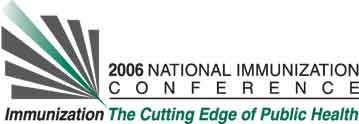Shannon Stokley, National Immunization Program, Centers for Disease Control and Prevention, 1600 Clifton Road, NE, MS E-52, Atlanta, GA, USA, Karen Lees, National Center for Health Statistics, Centers for Disease Control and Prevention, Hyattsville, MD, USA, Allison Kennedy, Immunization Safety Office, Centers for Disease Control and Prevention, 1600 Clifton Road, NE, MS E-61, Atlanta, GA, USA, and Barbara Bardenheier, CDC, Atlanta, GA, USA.
Learning Objectives for this Presentation:
By the end of this presentation participants will be able to describe: the frequency of CAM use in the U.S. and adult vaccination coverage levels by CAM use status.
Background:
While many Complementary/Alternative Medicine (CAM) practitioners do not object to immunization, some discourage or even actively oppose vaccination among their patients.
Objectives:
Describe vaccination coverage rates of adults aged ≥18 years according to their CAM use status; determine if there is an association between CAM use and adult vaccination coverage.
Methods:
Data from the 2002 National Health Interview Survey were analyzed. Receipt of influenza vaccine during the past 12 months, pneumococcal vaccine (ever), and ≥1 dose of hepatitis B vaccine was self-reported. Coverage levels for each vaccine by CAM use status were determined for adults who were considered high priority for vaccination because of the presence of a high risk condition and for non-priority adults. Multivariable analyses were conducted to evaluate the association between current CAM users and vaccination status, adjusting for demographic and healthcare utilization characteristics.
Results:
Overall, 36% were current CAM users. Among priority adults, unadjusted vaccination coverage levels were not significantly different between current and non-CAM users for influenza (42% vs 44%; p-value=0.09) or pneumococcal (38% vs 40%; p-value=0.06) but were significantly different for hepatitis B (60% vs 55%; p-value=0.04); however, this difference did not remain significant in multivariable analysis. Among non-priority adults, current CAM users had significantly higher unadjusted vaccination coverage levels compared to non-CAM users for all three vaccines (p-values <0.001), but only pneumococcal and hepatitis B vaccination rates remained significantly different in multivariable analyses.
Conclusions:
Because CAM use has been increasing over time in the U.S., it is important to continue monitoring CAM use and its possible influence on receipt of immunizations among adults.
See more of Posters
See more of The 40th National Immunization Conference (NIC)

